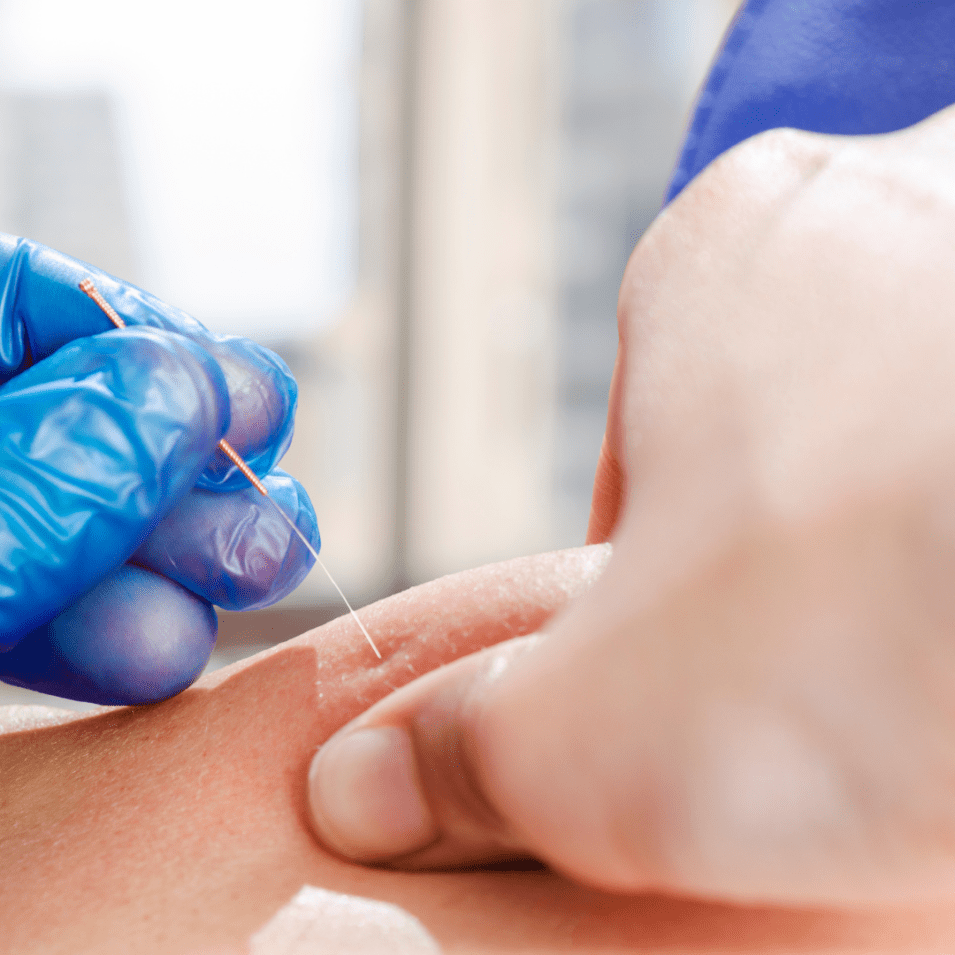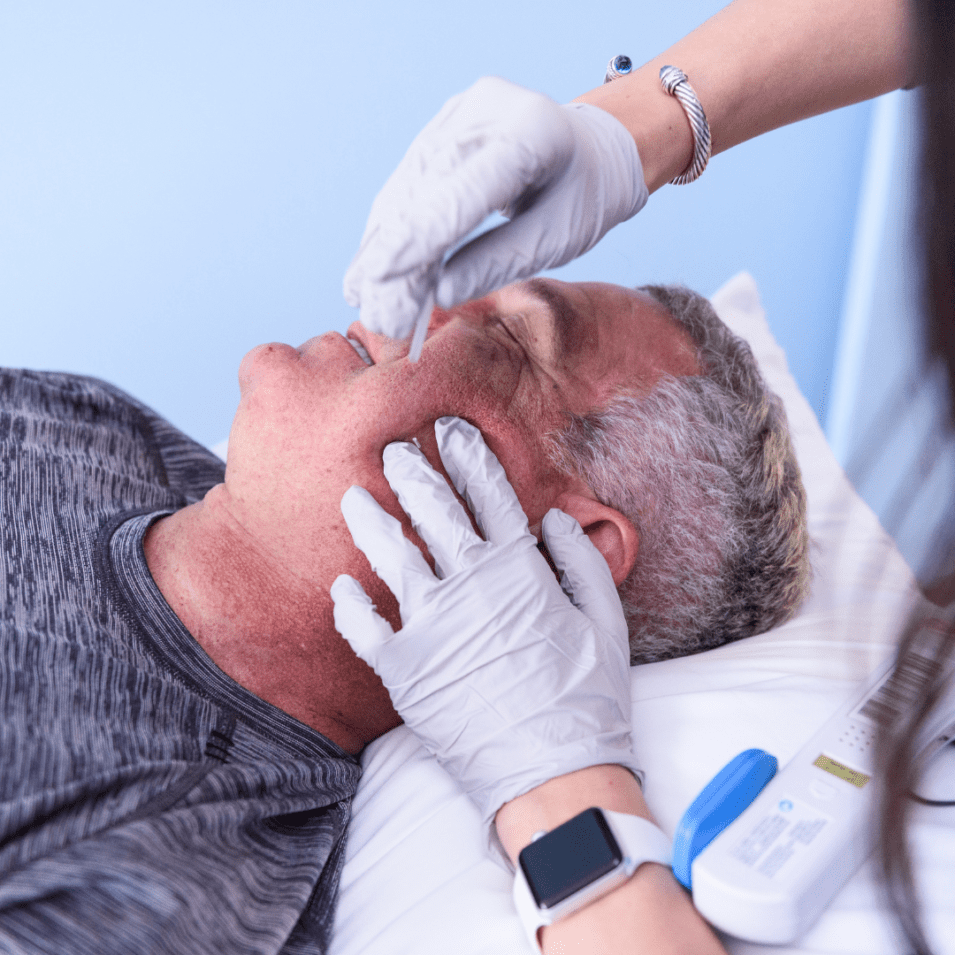Demystifying Dry Needling
- Why is dry needling so popular
- Are dry needling and acupuncture similar?
- What is dry needling?
- Can dry needling help me?
Why is dry needling so popular?
Dry needling is a treatment often used in physical therapy. It is growing in popularity because of its significant impact on reducing musculoskeletal symptoms. It is perhaps the most effective way we have to directly treat muscular restrictions and myofascial pain. The results can be dramatic. They can provide a relief you have not been able to achieve otherwise.
A skilled physical therapist with advanced training will perform dry needling. It is also used along with other manual therapy techniques and supplemental exercise. As with any treatment involving needles, patient comfortability can vary. However, dry needling uses very thin acupuncture style needles and is very commonly used in physical therapy practice. It has minimal to no adverse side effects. There is no medication or injection involved with the needling. This is why it is termed “dry” needling. The therapeutic effect comes from the act of inserting the needle into the muscle with no medication or injection involved.
The bottom line: nagging restrictions or pain can quickly start resolving on a physiological level resulting in improved function overall.
Dry needling is NOT acupuncture.
Acupuncturists are experts in a different source of knowledge based in Eastern medicine that follows “meridians” and involves the movement of “qi”. Dry needling is neuromusculoskeletal and it involves a different treatment technique. It is part of our treatment “toolbox.” This means that it is used in conjunction with many other manual techniques, patient education, and supplemental exercise to support the changes made with dry needling.

What is dry needling exactly?
Dry needling is a tool used to address musculoskeletal pain and dysfunction. This is done specifically in the treatment of myofascial trigger points (MTrPs). It can also be used to facilitate contraction of muscles and functional movement.
A trigger point is a hyperirritable taut band of muscle. These bands of tissues can be active. This means you experience pain or symptoms at rest. They can also be latent. This means they are only reproducible with palpation to the area. MTrPs often have a specific referred pain pattern and are commonly associated with abnormal physical therapy exam findings. These are findings such as decreased range of motion, muscle weakness, and decreased coordination.
With dry needling, a thin, filiform needle is inserted in the trigger point causing a stretch reflex we call a “local twitch response”. This is a physiological response in the muscle fibers that causes a brief muscle spasm sensation that often feels like a release you’ve been needling a for a long time.
Dry needling also brings healthy inflammation to the localized area. The needle induces a mild insult to the tissue, which allows increased vascularization and triggers the cascade of events for the inflammation response. This is the first step in the healing cycle.
We can also use electrical stimulation on the needles to improve facilitation and reduce the soreness that can be associated with needling. With this intention, needles can be placed in a muscle called multifidus along the spine at the same level of the spine associated with the nerves that innervate a muscle. The electrical stimulation can then be used to link the spinal level (for example L5) with the peripheral muscle it innervates (gluteus medius) to boost the motor control of the pathway.
Ok so what does all of that really mean?
It works out the kinks! Mechanically, it helps to reset the muscle cross fibers to reduce trigger points and improve contractibility. Chemically, it flushes bi-products that develop in trigger points. They then stimulate the pain receptors that then send pain signals to the brain.
Improvement of both of these things overall improves the motor control pathways of our body, so that the muscles are more efficiently and effectively able to respond to neurological input.

How can dry needling help me?
If you relate to the description of myofascial trigger points at all, dry needling is most likely worth your time to try! Before any needling takes place, a physical therapist provides a thorough examination and confirms you are an appropriate candidate. If you’re struggling with decreased range of motion, pain, or weakness in any of your joints, dry needling may add value to your treatment plan. Or, it could be the very thing that you’ve been needing for a long time to address your symptoms and get you back to feeling good and doing what you love!
More questions about dry needling? Contact us!
About the author:

Dr. Samantha Dove is originally from San Antonio, Texas and has recently moved to Cincinnati from Atlanta, GA with her husband Sam and their dog Koda.
She was a springboard and platform diver for the University of Texas at Austin and has been a Doctor of Physical Therapy for over 5 years. Dr. Dove treats all orthopedic conditions with special interest in the spine, chronic pain, vestibular, and TMJ/TMD populations. She has her Manual Therapy Certification through the University of St. Augustine (USA) and has extensive dry needling training with KinetaCore.
Dr. Dove highly values continuing education in a variety of physical therapy topics but has taken special interest in the CranioFacial courses through USA to advance her TMD treatment skills. Health and wellness are a natural interest of hers in her personal life including participating in activities such as yoga, running, gardening, reading, cooking, family walks at Eden Park and all things self care! She is very excited to explore Cincinnati and to be joining the team at Anchor Wellness Center!


